Meet the Minoan Snake Goddess
The enigmatic Serpent Mother slithers through the worlds...
This is one of a long-term series of posts about Ariadne’s Tribe style inclusive Minoan spirituality. All my posts about Tribe spiritual practice can be found here. Please feel free to ask questions and request subjects for future posts.
The Minoan pantheon is headed by a group of five mother goddesses: Rhea, Therasia, Posidaeja, the Serpent Mother, and Ourania. The Three Great Mothers (Rhea, Therasia, and Posidaeja) are very present, very relatable. Their sacred realms of Land, Sky, and Sea are visible and tangible to us. Ourania is more distant, vaster, and harder to comprehend from a human viewpoint, but we can still look up into the night sky and see her beauty.
The Serpent Mother is the most incomprehensible of all, at least from the point of view of mortal humans in physical bodies. She’s an enigmatic yet ever-present figure in Minoan spirituality, a sort of out of the corner of your eye kind of being, difficult to define or pin down, yet most people intuitively understand her on some level.
Today I'm going to attempt, not to corral her into a concrete definition, but to describe the way we view her and honor her in our spiritual practice in Ariadne's Tribe. I'll talk around her, and by that means, we can begin to see the outline of who and what she is.
If that feels roundabout, I can tell you, it's quite appropriate for the Serpent Mother, because that's the way she works: in the in-between spaces, in ways that can't be pinned down or easily defined, in squishy non-linear and non-logical ways, showing the shape of things by the shadows they cast.
Let's begin with the obvious: We connect her with snakes. We consider the famous Snake Goddess figurines, like the modern replica in the photo above, to represent her.
She resides in the in-between places, the interplay between light and shadow, which the Minoans used to great effect in their religion, building whole walls made of doors that could be opened and closed to adjust the light and the darkness in their ritual spaces, inducing altered states of consciousness.
Those altered states of consciousness are serpent-y things, not easily definable or often, even describable using material-world concepts and words.
We see the Serpent Mother in the night sky, among the stars — not all of them, but specifically the constellations that are currently called Ophiucus and Serpens. It’s likely the Minoans had their own unique view of the heavens, just as the Sumerians and Egyptians did. We’re building a Minoan star map that works for us in as polytheists in the modern world; I’ll share more about it in a future post. But back to the Serpent Mother…
She is the Labyrinth itself, the pathway through which we are born and reborn, the way to the other worlds, the path between lives, the path that we know deep down in our bones, in which we cannot get lost. The labyrinth images we create in this world to look at and to walk through are reminders of that other, greater Labyrinth that lies in the Serpent Mother's realm. They're solid material labyrinths that are shadows of the true immaterial one.
If that feels backward to you, well, that's the way the Serpent Mother works.
She has many connections within the Minoan pantheon, many threads that weave her together with the other deities. For instance, she has associations with the goddess Rhea, who is the Grain Mother, since snakes eat the rodents that want to eat the grain. We also connect her with Ariadne, the Lady of the Labyrinth, for obvious reasons. And the Serpent Mother has close associations with Ourania, who is the Minoan face of the Great Cosmic Mother-of-All.
But even so, the Serpent Mother is very much her own thing, one of the mother goddesses while still being unique. We find her in Minoan art wherever snakes slither their way into our vision.
You probably recognize the image up top, the famous faience figurine with its writhing snakes. It’s iconic of Minoan religion, to the point that many people think the Snake Goddess is the only Minoan deity. That’s not true, of course — the Minoans were polytheists, just like all their Bronze Age Mediterranean neighbors.
Did you know that there are only a handful of genuine snake-y Minoan statuettes? (There are lots of forgeries, from the thriving early 20th century industry in faux-Minoan artifacts.) Here are the real ones:

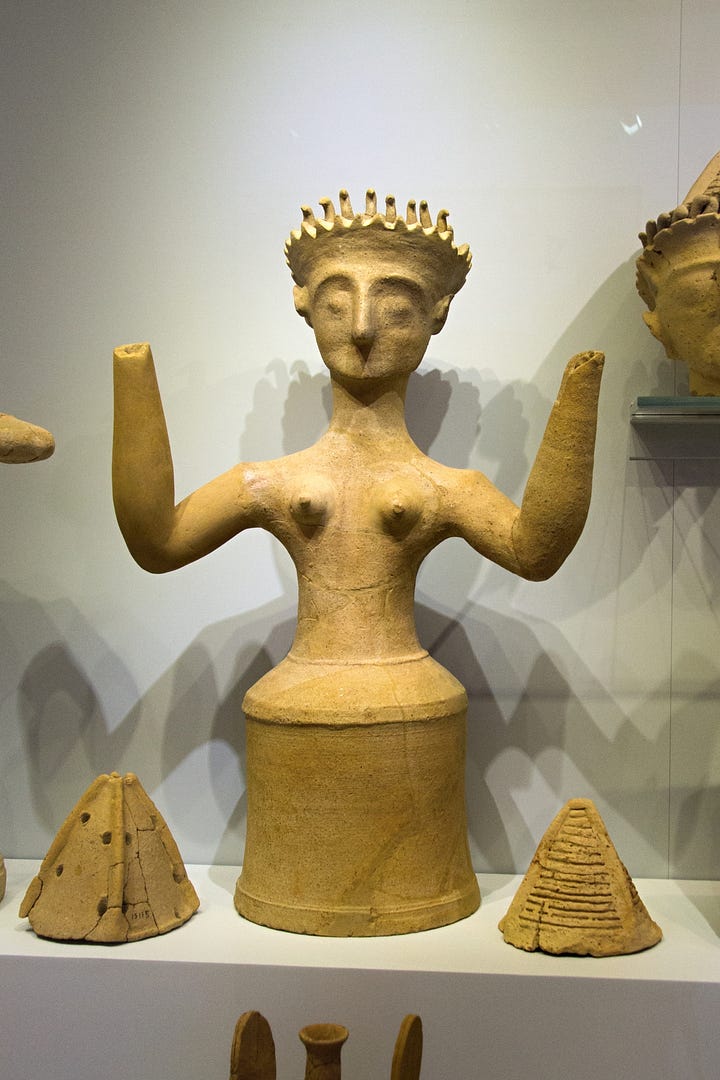
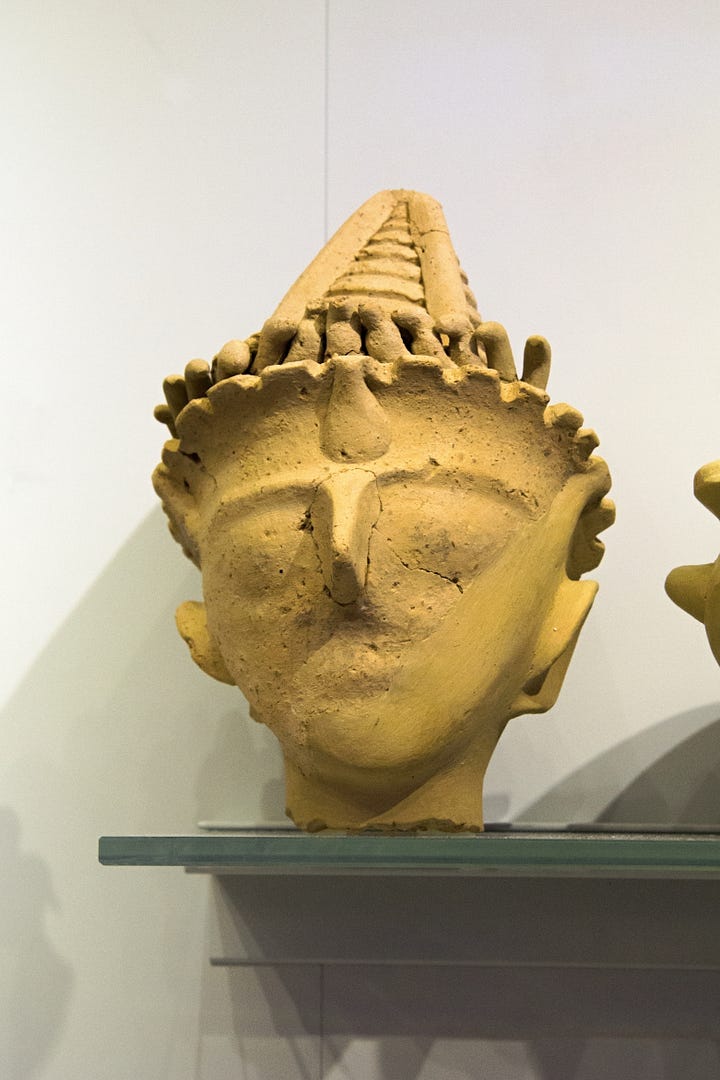

In addition to the few human-style figurines, we can also find the Serpent Mother in some interesting perforated vessels that have snakes on them.
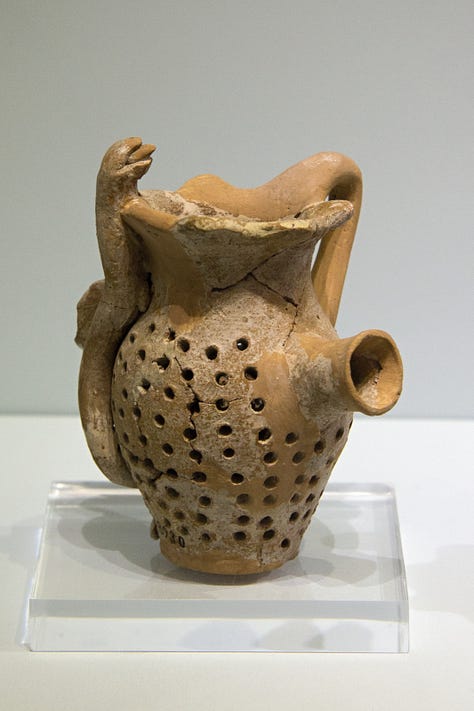
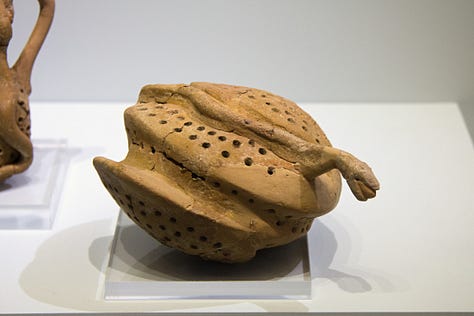

Perforated vessels were used in Old Europe and Neolithic Anatolia (the place the Minoans’ ancestors came from) in rain-making ceremonies, since the sound of rain hitting the ground can be similar to the hissing of a snake. The Minoans appear to have continued some Neolithic religious practices into the Bronze Age, so we connect the Serpent Mother with rain and rain-making.
Oh yes, there’s also a pretty amazing snake fresco from Tylissos:
The pattern on the fresco’d snake suggests that it’s meant to be a leopard snake, one of the native snakes of Crete, and non-venomous to boot. The fresco is fragmentary, so we don’t have any further context for this design. It’s kind of mesmerizing to look at, though.
The Serpent Mother shows up in so many different forms, both material and non-material. She even appears in the Minoan sacred calendar, in the form of the Serpent Days: the days between Winter or Summer Solstice and the next Full Moon. Given her slithery nature, it’s not surprising that the length of the Serpent Days varies from year to year.
So look for the Serpent Mother out of the corner of your eye and in the shifting shadows. Feel her presence beneath the surface, reflecting the world back to itself. Sense her movement through the many worlds that make up our universe.
Serpent Mother is with us!
I’m not going to paywall my Substack, but if my work has meaning and value for you, please consider dropping a little something in my tip jar at Ko-Fi. Thank you!
You can find my books here and my art here and here. I do apologize, but due to unpleasant activity from trolls, I’ve had to limit comments to subscribers only. I hope you understand.
About Laura Perry
I'm the founder and Temple Mom of Ariadne's Tribe, a worldwide inclusive Minoan spiritual tradition. I'm also an author, artist, and creator who works magic with words, paint, ink, music, textiles, and herbs. My spiritual practice includes spirit work and herbalism through the lens of lifelong animism. I write Pagan / polytheist / magical non-fiction and fiction across several different subjects and genres. My Minoan entry in the Moon Books Pantheons series is now available for pre-order and will be released on 26 August 2025. My book of modern Minoan myths is now available in paperback, with the ebook coming soon. I’m also an avid herb and vegetable gardener and living history demonstrator.





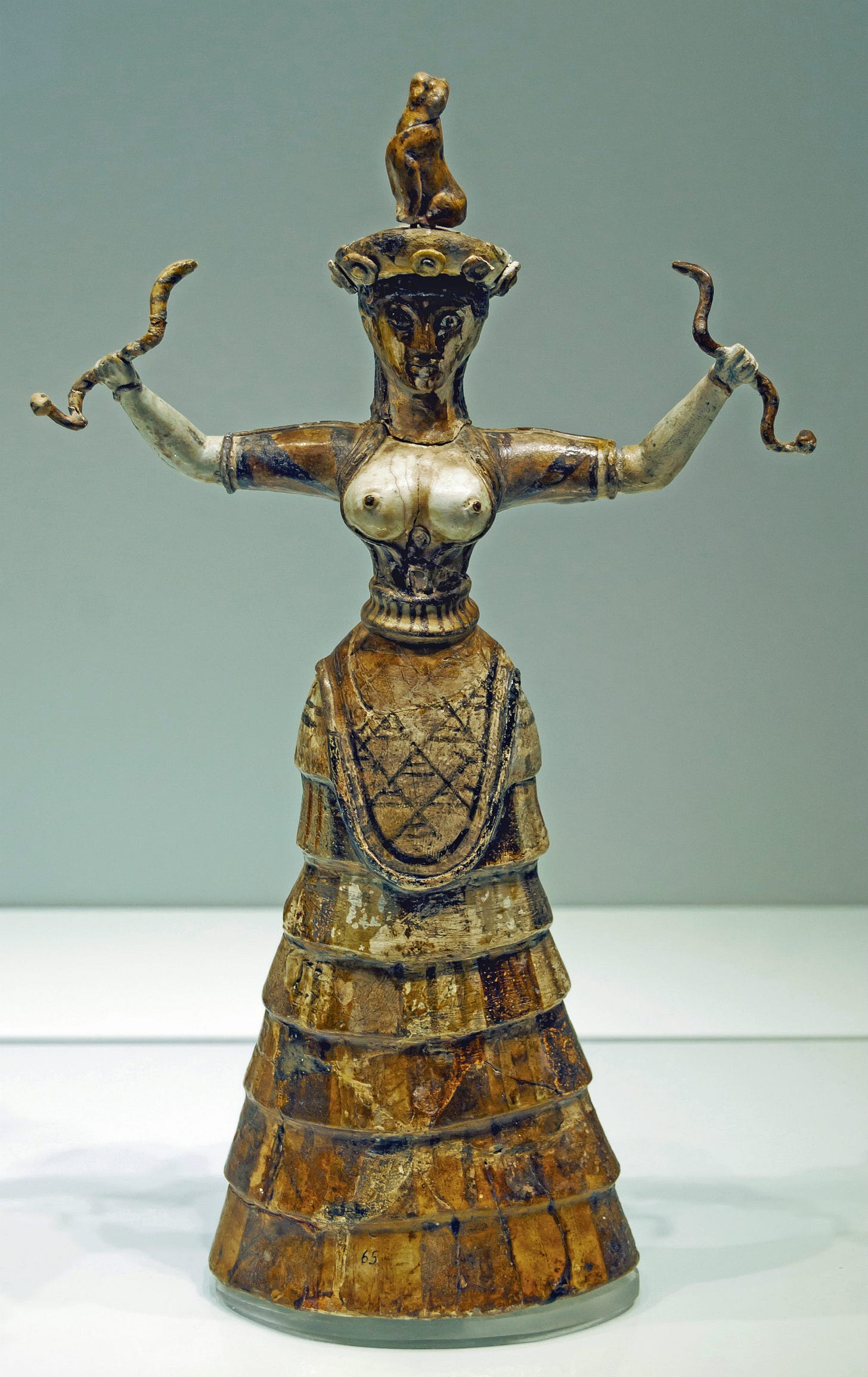
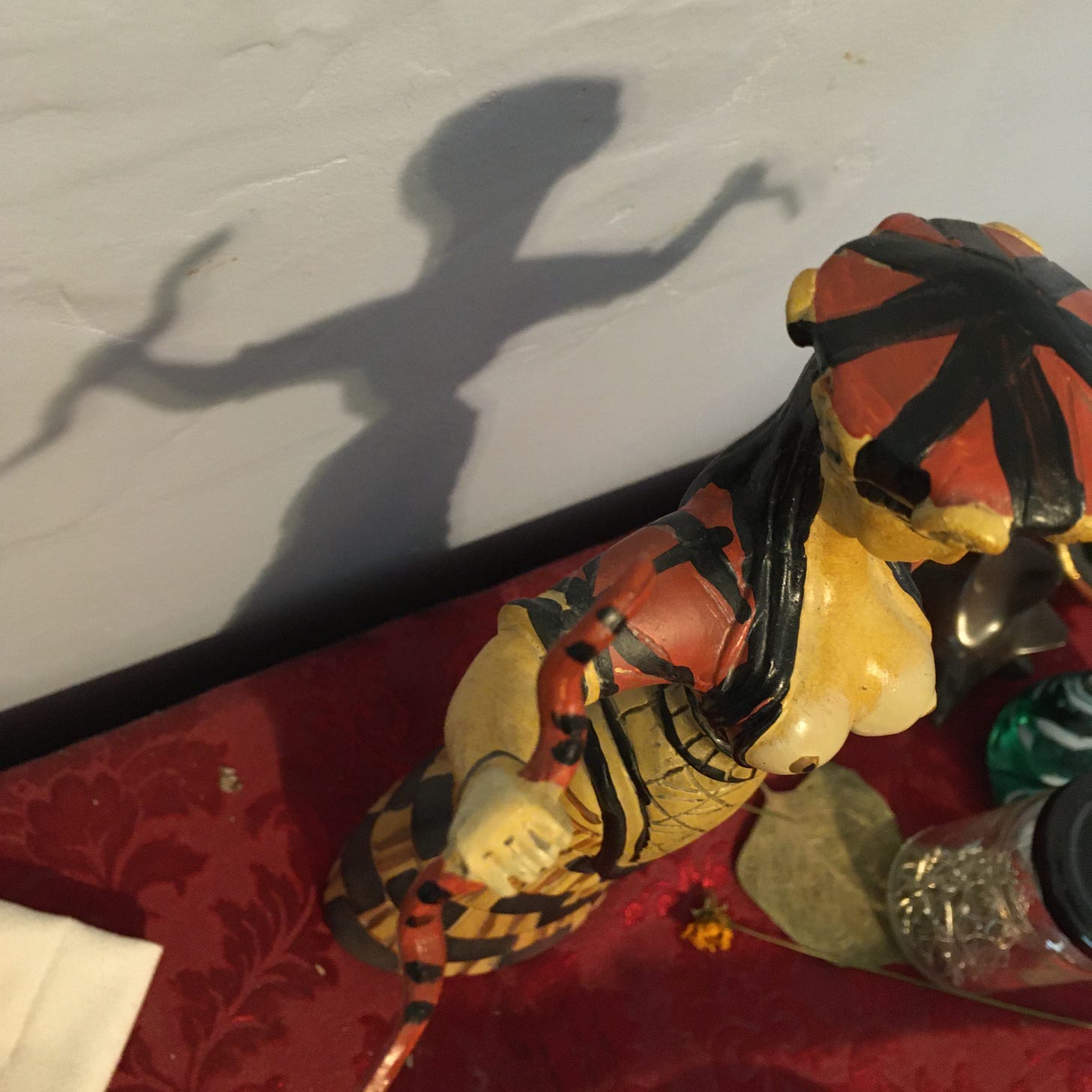
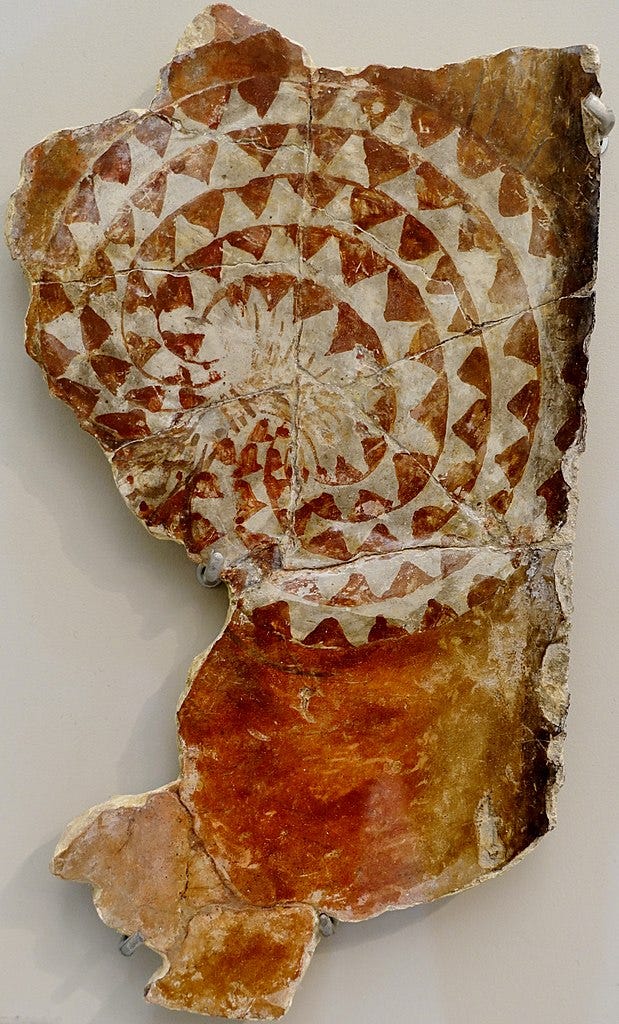

Okay, I'll ask the obvious. What's with the cat on her head? Love this reconstruction your Tribe is doing.
Very insightful post. I am learning so much about the Minoans from your posts. Thank you!